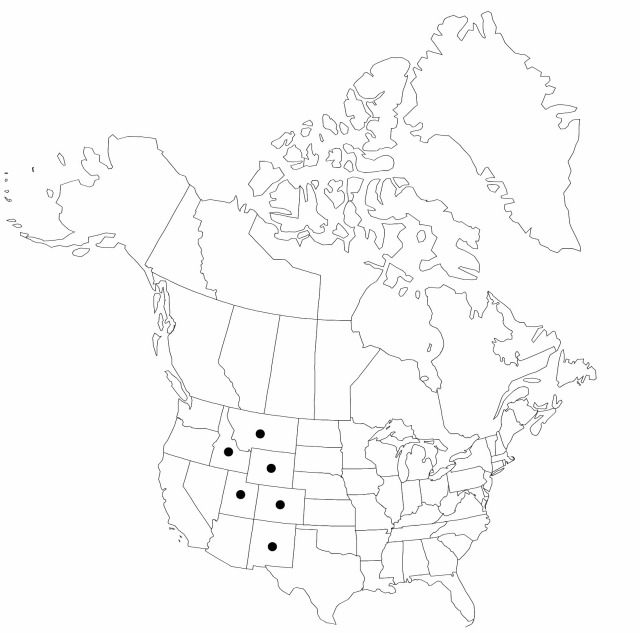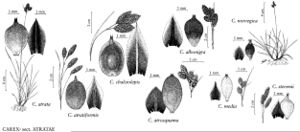Carex stevenii
Ann. Bot. Soc. Zool.-Bot. Fenn. “Vanamo” 19(3): 11. 1944.
Plants loosely cespitose. Culms 15–60 cm, distally finely scabrous. Leaves 3–4 mm wide. Inflorescences: proximal bracts shorter than or exceeding inflorescences; spikes overlapping, distinct, contiguous, short-oblong or cylindric, 5–15 × 3–4.5 mm; lateral 2–3 spikes pistillate; proximal spikes separate, erect, short-pendunculate; distal lateral contiguous or separate, not forming dense terminal cluster, of similar length; terminal spike gynecandrous. Pistillate scales dark-brown to black, margins hyaline, ovate, shorter than and as broad as perigynia, midvein same color as body, inconspicuous. Perigynia ascending, green becoming dark-brown or purple-black, veinless, elliptic, 2–2.5 × 1.25–1.5 mm, frequently serrulate, apex abruptly or gradually beaked, smooth or distal margins sparsely papillose; beak 0.2–0.3 mm, shallowly bidentate, serrulate or smooth. Achenes nearly filling body of perigynia.
Phenology: Fruiting Jun–Aug.
Habitat: Open forests, moist meadows, stream banks, occasionally reaching lower alpine tundra (Colorado)
Elevation: 2400–3500 m
Distribution

Colo., Idaho, Mont., N.Mex., Utah, Wyo.
Discussion
The illustration in K. K. Mackenzie (1940) as Carex vahlii is C. stevenii. Although morphologically close to C. norvegica and alternatively treated as a race, C. stevenii is ecologically distinct and geographically distant from C. norvegica.
Selected References
None.
Lower Taxa
"shortened" is not a number.
